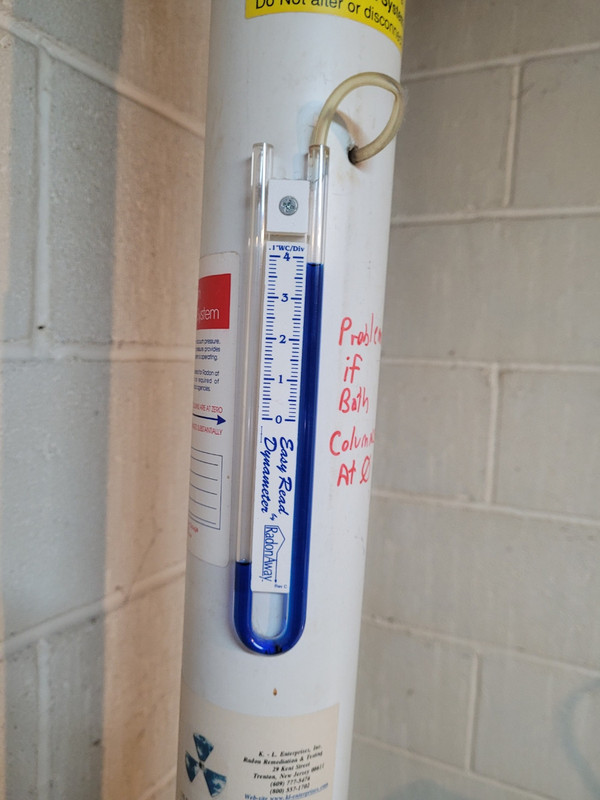Is it better to get a test kit where you collect a sample then send it in for analysis? Or buy a detector that works like a CO detector? The detector will cost a lot more but gives an ongoing level as opposed to a one-and-one test. Which one will give more accurate results?
How long is the ongoing detector good for? A CO detector is only good for 5-7 years. Once you know the expected life of the product. it is a lot easier to make a decision.
The one and done radon tests are really suppose to be repeated every few years if you live in an area prone to higher then safe radon levels.
We have a radon remediation system, I check it fairly often. But I’m going on 3 years in this house and have not retested. I probably should.
I’m doing some checking. Consumer Reports has never reviewed radon detectors.
I’m seeing that the better radon detectors are expected to last about 10 years. So if you tested every other year, you’re spending maybe $15x5 or $75. So the one offs are a better bargain but the ongoing ones offer a lot of features starting around $90. Also convenient and probably better readings.
The one-offs can be a bit of a pain, last one I did took over a month to get the results back to me. Though the professional house inspector got results in under a week.
Another bonus to the units, you can test in a variety of areas if you’re so incline. It might be nice to know the levels in your garage if you use it as a workshop. In my case I would like to know the levels in our basement game room vs bedrooms. Many of them include Wi-Fi and phone apps to make it even easier.
I’m probably going to look into buying one as I’m overdue for a test anyway.
It might end up being more than that. Many of the tests you have to pay for return shipping, so that could almost double the price. This one claims to include all costs for $17.
We did the mail in tests first to see if it was concerning, then bought a continuous monitor. Our reading is about 1.75, for reference the US standard is something like 7.00 or 8.00 and the European standard is 4.00, so we are below but wanted the additional info and see how it varies over time.
The continuous monitor matched the test kit reading so that was reassuring. We did see a seasonal difference of maybe 20%. We were also able to get the reading to 1.00 with running the fan for the central a/c continuously (which slightly pressures the lower level, which I assume helps keep the gas out). I was later able to use a radon pump to get levels to about 0.30 and set it up in the plumbing clean out to depressurize under the slab.
So if you are into DIY radon reduction a continuous monitor would be helpful.
How do they stop working? I have one about 7 years old, it still seems to be reading within expected levels.
Not sure, but a question for a different thread I think. Some of the chemical components wear out basically.
I have this one. I had Radon mitigation installed at my house, and I compared this to the readings on the commercial detector that they used - very close.
https://www.amazon.com/Corentium-Detector-Airthings-223-Lightweight/dp/B00H2VOSP8/ref=sr_1_5
I just leave this running all the time. Levels do fluctuate considerably, and it’s the long term average that you care about.
I have no idea how long they last. I’ve had mine 5 years and it still seems to be working fine, but I have no way to recheck to see if it is still accurate.
Where do you place it?
I have the same one, and I have it on a shelf in the basement a few feet above the floor. It’s in a place where it’s convenient to check it as I walk by, so I often do.
When I first got it, it was reading high, and as a result I discovered that the 15-year-old blower in our radon mitigation system had died at some unknown point over the previous couple of years. I replaced the blower and fitted the system with an audible alarm that sounds when the system’s pressure differential falls below a specified limit.
I ordered the Ecosense EQ100 EcoQube. It is plug-in and connects to a phone app for Short & long term monitoring. I’m suppose to get it tomorrow. I’ll report back on it once installed and after first readings.
Did your system not include a dynameter? I thought they were standard, but maybe only in NJ.

Very simple device that shows if the fan is working.
On my bedside table. That’s the level that really matters, not whats in your basement.
I think you mean a manometer. It did have one, but:
-
it cracked many years ago and lost all the liquid, and
-
it’s in an out-of-the-way location behind some shop equipment that makes it a chore to read.
I hadn’t been checking the manometer, since the radon tests over the years had been fine (until the radon meter I bought suddenly showed a problem). When all of this happened, I replaced manometer along with the blower.
We don’t have radon mitigation here, but only a couple of hours north of here, in an area with disused uranium mines, it’s written into the local bylaws.
Manometer! Duh dooo duh doo doo! Manometer! Duh doo doo doo! Manometer! Duh dooo duh doo doo! Duh doo doo! Duh doo doo! Duh doo doo doo doo, doot! Doot! uh doo doo doot!Sorry.